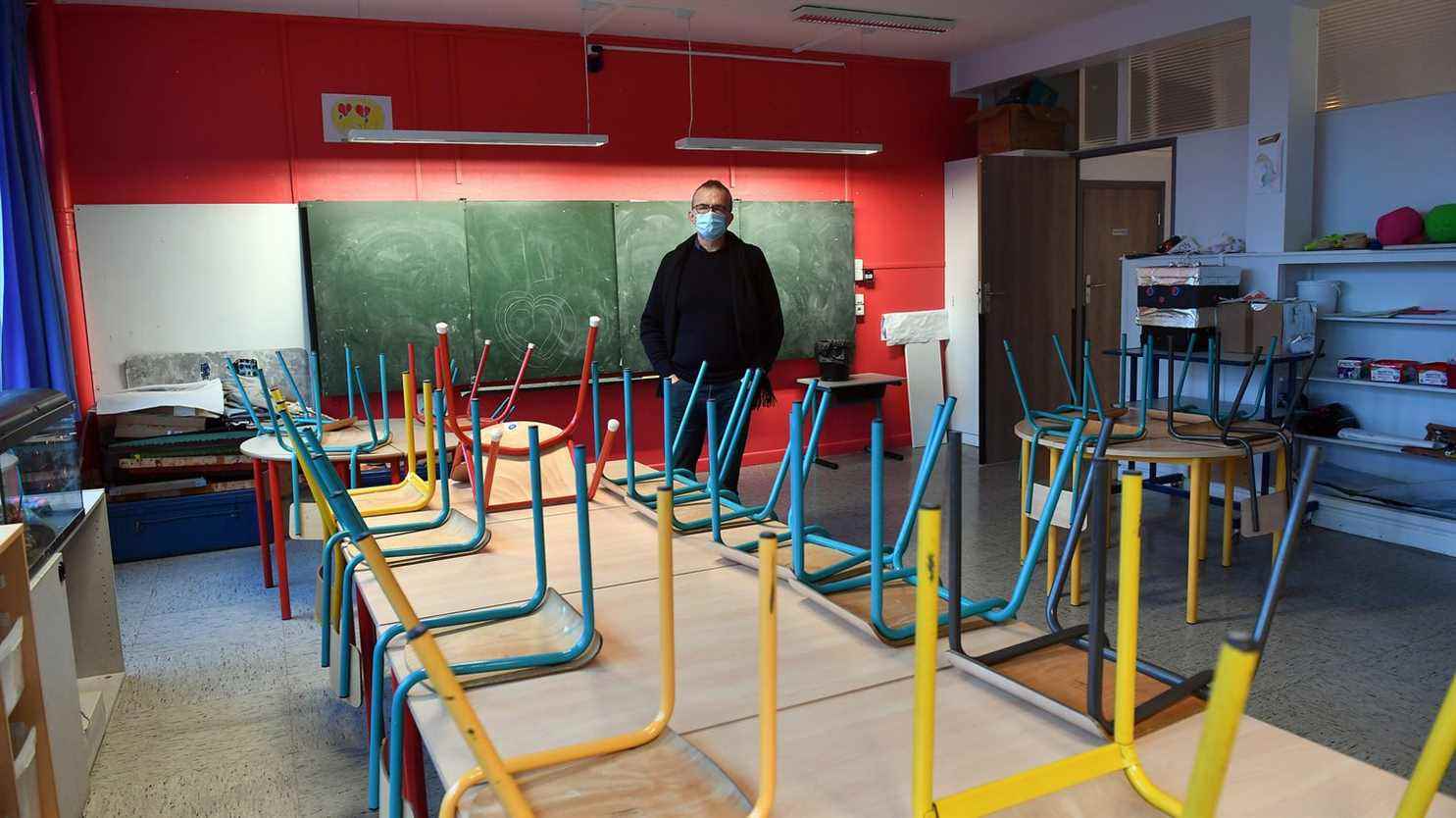A notable mobilization but not unprecedented. The teachers’ strike to denounce in particular the health protocol, Thursday, January 13, was followed by 38.5% of school teachers and nearly 24% of middle and high school teachers, according to figures communicated by the Ministry of Education national at midday. This is the second most important social movement in the world of education since the start of Emmanuel Macron’s mandate, as our infographic shows. (below), which compiles as exhaustively as possible the figures published at each strike by the services of Jean-Michel Blanquer.
>> Day of strike in schools: follow the mobilization of teachers in our direct
The record of mobilization, since May 2017, remains that reached on December 5, 2019, on the occasion of a day of inter-professional struggle against the pension reform project. The strike rate was then 51% in the primary and 42% in the secondary, unheard of since 2003, by the admission of the executive.
Earlier this week, the Snuipp-FSU, the main primary school union, announced a “historic mobilization by its magnitude over the last twenty years”. In fact, the strike this Thursday, supported by all unions in the sector, is in the top 10 most followed since 2002, perhaps around the fifth place. Difficult to be more precise: contacted by franceinfo, the ministry said it could not send a global document listing the main actions of recent decades.
The prize always goes to the movement of May 13, 2003 in the public service and transport against a pension reform carried by the government of Jean-Pierre Raffarin. At the time, 74% of teachers had stopped working in schools, 71% in colleges, 65% in general high schools and 64% in vocational high schools, according to figures from the ministry.
A few months earlier, on October 17, 2002, a previous movement had been followed by 49% of school teachers, 44% in colleges, 36% in general high schools and 37% in vocational high schools, according to a ministry archive. It was then a question of denouncing budgetary restrictions in National Education.
Comparisons of mobilization rates between today and the 2000s should be made with caution. “In 2010, the ministry changed its methodology”, emphasizes to franceinfo Laurent Frajerman, high school history teacher and associate researcher at the Center for Research on Social Links at the University of Paris. “Since this date, the percentages are mechanically underestimated, which could lead to believe, wrongly, that the teachers strike less than before”, deplores this specialist in teacher unionism, close to the FSU.
In the second degree, the figures put forward by the ministry come from field reports carried out between 8 and 9 am on the day of the strike. Heads of establishments record the number of unjustified absences in a software program and a strike rate is calculated in relation to the entire staff. A method criticized, because it counts in particular as non-strikers all the teachers who do not have lessons from 8 am and who will nevertheless be strikers.
“By relying on the establishment’s overall workforce rather than the expected 8 am workforce, the ministry is effectively reducing rates.”
Laurent Frajerman, specialist in teacher unionismto franceinfo
This methodology, also criticized for the opacity of its sample, partly explains the significant differences between the figures communicated by the executive and those of the unions. On Tuesday, on the basis of strike intentions filed in schools, the Snuipp-FSU had promised “more than 75%” mobilization in the first degree, nearly double the 38.5% finally announced by the ministry. Thursday at midday, the Snes-FSU reported 62% of strikers in the second degree, against 24% on the side of the government. As the techniques used by unions also have their limitations, the correct score is probably somewhere in between.
